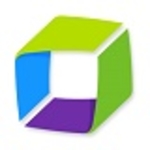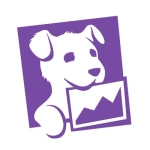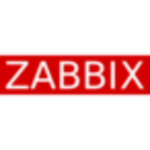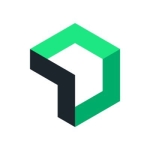What is most valuable?
The transaction snapshots are probably by far the most used feature because it gives a lot of details. It adds a lot of value. You can really get to the details really, really quick. You can drill down very, very quick. When you show it to somebody who's a stakeholder, they typically get it right away. You don't have to explain. You don't have to “translate.” That really helps with the communication. That really gets people focused on the task at hand, rather than trying to pass the buck around. That really helps quite a bit.
How has it helped my organization?
As I’ve mentioned elsewhere about correlation, it's really helpful because I don't have to spend time with multiple teams. A lot of times, what might have happened in the past was where, if there was a problem, we would call like six, seven, or eight different SMEs from different domains: network, storage, compute; not on all problems, but at least some of the ones that we suspected. Application; if you have multiple applications, sometimes you have a different person who owns each of the different applications; maybe the database guy. You can really start adding more people in there. If you think about it from a productivity point of view, it's a waste of a lot of time, if you have to keep doing that for every single problem day in and day out.
Whereas, when you have AppDynamics, it's actually tracing the call. So, if three out of four services are functioning fine, for the most part, I don't even have to worry about them. It is common to call the networking guy because nobody really knows where the problem is. Now, he's or she’s out of the picture. I'm sure he's or she’s a lot happier about it, too. Same with the storage and compute: You start leaving these people out of the conversation that don't need to be there, which is a good thing for the company, and us. We don’t also have to spend that time explaining and hearing what they have to say. That’s not to say they don't have value to add, but if there's really nothing there, we're wasting their time, as well. So, it's really helpful.
AppDynamics helps me not just rule in the areas, but rule out where I don't have to talk. More often than not, the rule-out gets hidden away, but it's a really good add-on because I'm only focusing on the problems.
What needs improvement?
I can think of 2-3 complex problems that probably would be helpful to most customers. Heap analysis is one; memory leaks. That's already there, so maybe that does not count at this point. The second one I would probably call out is connection leaks. So, heap analysis and connection leaks; those would be very helpful.
I think they've already started working on the next version of license management. That should be pretty helpful.
What do I think about the stability of the solution?
Stability’s very good. Once in a while, we've had some hiccups around the UI being slow, but that typically gets resolved pretty quickly. A lot of times, we don't even have to talk about it. Once in a while, we've had to raise a couple of tickets. I think one time it was us using the environment a little more aggressively than maybe we should have been, and we could have been, for that matter. Most of the time, stability’s not an issue. Once in a while, you do get the spinning circles. I've experienced worse. This is nowhere near that bad. It's very good for the most part.
What do I think about the scalability of the solution?
We're a fairly large install. It scaled well, but then again, it's a SaaS solution. They've got their magic sauce working, of course, really well for us.
How are customer service and technical support?
We use technical support quite a bit. We've got a team of engineers and there are at least five or six of them that have the capability to open up tickets. We typically get really good responses. Every time I've opened a ticket, I usually get a response in good time. Not just a response; it's usually a good response; it's a meaningful response; it's something that helps you solve the problem that you have.
Once in a while, as you can imagine with any product, they get dragged out because maybe it needs a longer-term solution. I don't think I've seen anything that would cause concern.
Which solution did I use previously and why did I switch?
We were using a tool prior to this that was not doing any of the stitching; the correlation. We tried another one that was doing some of it, but we found AppDynamics was doing it better.
We went through the PoC because we had our fingers twisted the wrong way a few times with our old tools. It was using up a lot of our time. Of course, when we heard that they could do it, we really wanted to see what they had to offer. The PoC was very helpful. We actually used it on live projects – testing projects not production – to figure out if it would be able to help. We were able to do a lot of it, without much overhead. It was a game changer right out the door.
How was the initial setup?
I was involved in the PoC, as well as the initial setup. The initial engagement is a little complex, but when you look back – hindsight, they say, is 20/20 – but in this case, it really made good sense on how it's structured. Initially, it felt a little limited but then, as you see it over and over and over again, you realize that there's good thought process that's gone into it. It was pretty smooth sailing for the most part.
There were hiccups that we had with an arrival tool that tool's vendor was not able to resolve. This was during the PoC stage. With AppDynamics, we went through the technical support team. They really had the right answers in the right places. They knew how to solve it.
Which other solutions did I evaluate?
We did a PoC with New Relic for about eight months, in 2014. We haven't really gone back since then to look at New Relic, to really be able to compare in a meaningful manner, but we looked at them at that time.
There were other areas where New Relic wasn't planning on supporting; some of our legacy footprint, such as WebSphere 6 and Oracle E-Business Suite. AppDynamics was doing that, as well. It was another add-on that really mattered a lot because that was a very large footprint of our agents.
In general, ease of use was definitely one of the most important criteria when we selected the vendor; ability to correlate in an automated matter; and be able to gather diagnostic data or just even transaction data. We'd already seen how transaction data is helpful with Dynatrace, for which we just had a limited on-prem set of licenses. We were really happy with the PurePath and so on, but we didn't want to take Dynatrace into production for a variety of reasons. A prime one was that they capture all the snapshots, which we know would've added a lot of overhead. That's probably another really good criteria: added overhead. Then, of course, breadth of coverage, when it comes to different technologies because, if you have to buy a different license or a different tool for everyone, you’re kind of setting yourself up for other problems down the line. Those are some of the key points.
What other advice do I have?
Give it a shot. If you want to do a PoC, definitely do it. You should definitely have AppDynamics in there. I have no qualms about recommending the tool outright, but I think for your use case, you should probably PoC it on your own because you will really see the value add. If you don't, of course, then it is what it is, but I think most people will see the value add very, very quickly. They have a very competent team. They have the right people in the right places. Once they decide to commit to something, they actually do it and do it well. That's definitely a good plus.
I have not given it a perfect rating because I would like to see the heap analysis and the connection leak. There are some hiccups, I feel. I probably have to keep visiting the new feature sets that are coming with the leak analysis. Those minor things, those problems, the heap analysis and the connection leaks, are pretty time consuming, but in the grand scheme of things, the rest of the feature set is really, really great.
I haven’t even mentioned elsewhere the vast set of metrics that we have available to us, which is very helpful. I can create my own metrics if I want, if I choose to.
It definitely ticks a lot of checkboxes and there are a lot plus marks.
We also use AppDynamics End User Monitoring a little bit; not as much as APM. APM is used by a lot more of our internal clients. End User Monitoring is used and that's also helpful. There's a feature where you can actually see the traffic going from the End User snapshot down to the APM snapshot. That correlation is very, very helpful because then I don't have to do it manually. If you have to do it manually, a lot of it is a bit of guessing game, unless you have other ways of doing the manual correlation, which is a lot tougher, especially when it comes to production, where you want to really get things moving faster rather than slower. That can be very helpful.
Disclosure: I am a real user, and this review is based on my own experience and opinions.




















